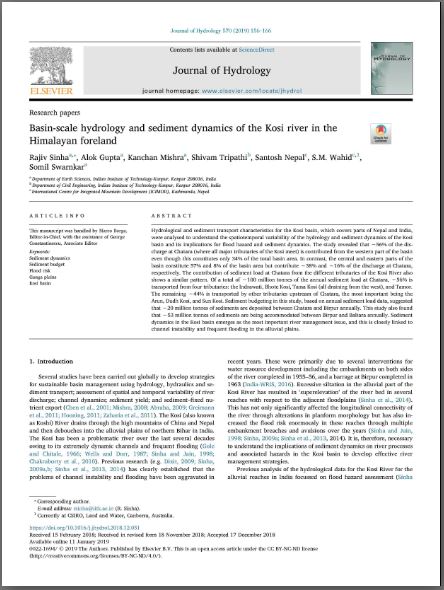In the Central Himalaya, the Kali River flow through the rocks of Tethys sedimentary (TS) sequences and Higher Himalayan crystallines (HHC) towards the upstream and through the Lesser Himalayan metasedimentary (LHS) the Siwaliks rocks in the downstream. The terrace sediments of the Kali River are geochemically investigated to infer nature of source region i.e. provenance and degree of chemical changes in the known tectonic setting during their journey. The low to high chemical index of alteration (CIA) of sediments (CIA = 22.24–87) indicate a dominant role of chemical and subordinate physical processes during sediment-forming mechanism. The longitudinal course emanating from TS in upper reaches to the Siwaliks in the lower reaches, the sediments along the main Kali River bear higher content Na2O, K2O, CaO and silica fractionation. The high and low ratios of La/Sc, Th/Sc and Co/Th advocate the dominance of felsic component in the source rocks. The content of Al2O3, TiO2, Fe2O3, La, Th, Sc, and Co/Th, La/Sc and Sc/Th ratios indicate the derivation of sediments dominantly from the leucogranite, granite to granodiorite and its gneissic sources, which commonly prevail in the rocks of Higher Himalayan crystallines sequences (HHCS). However, recycling and contribution of some aluminous Tethyan metasediments in the Kali River cannot be ruled out. Geochemical plots involving mobile and immobile elements show that erosion (sediment sorting) and weathering played a dominant role in the gradual change of sediment chemistry from source regions to catchments bed-load in the basin. © 2022
